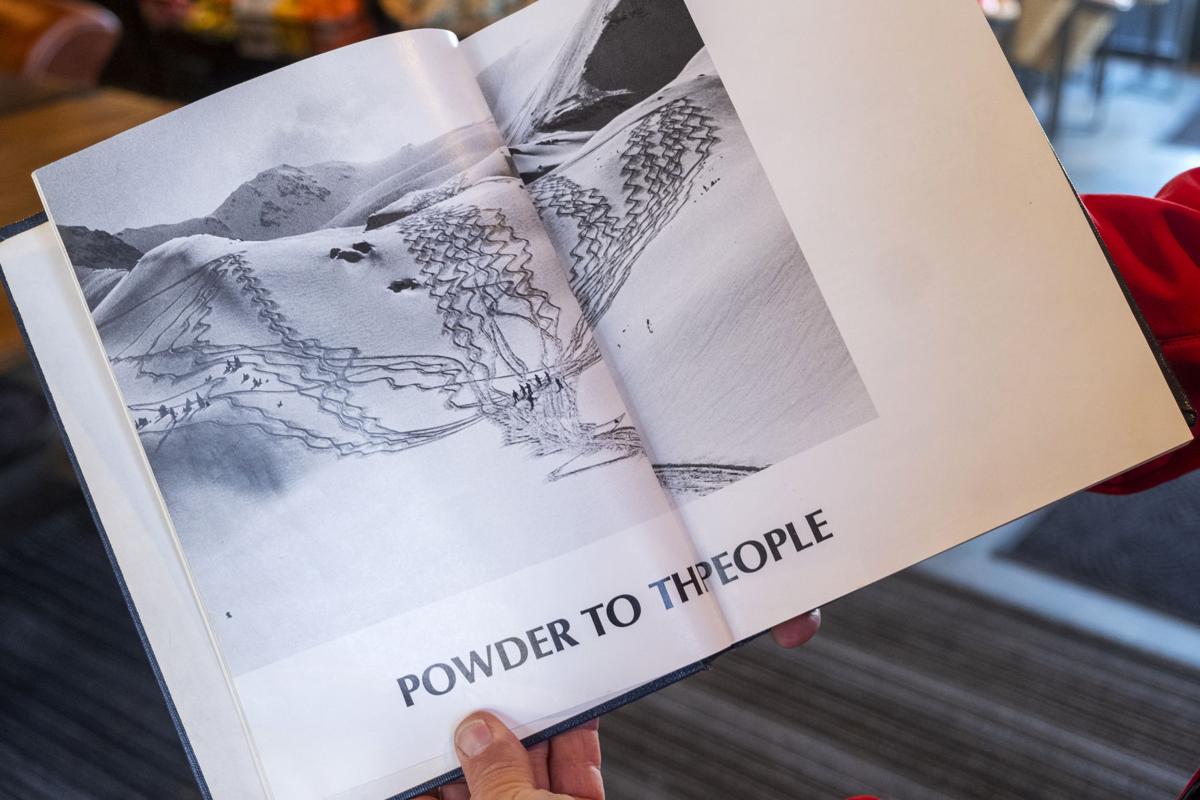
Jake Moe, co-founder of Powder magazine, holds a book containing first editions of Powder Magazine on Dec. 10, 2020, at a Starbucks in downtown Ketchum. The magazine was created by Moe and his brother, Dave, and released in the winter of 1972-73.
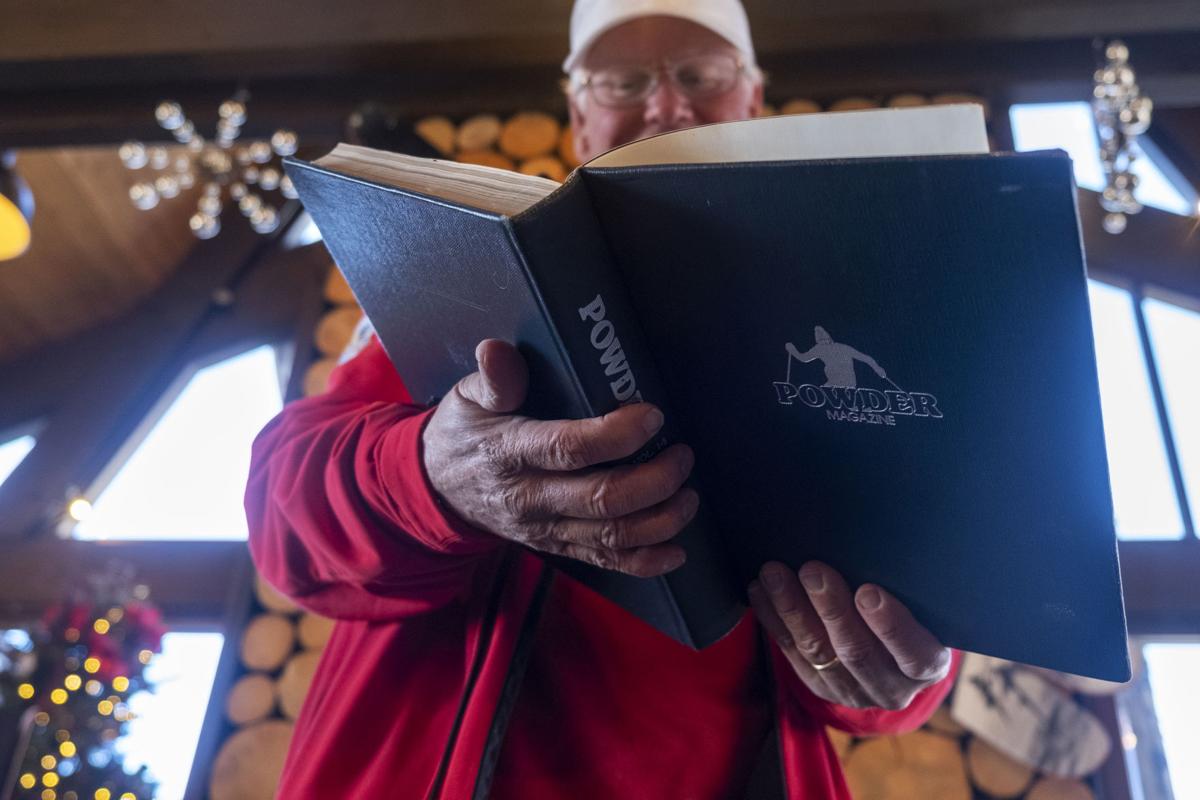
Jake Moe, co-founder of Powder magazine, reads a book containing first editions of Powder magazine at a Starbucks Dec. 10 in downtown Ketchum. The magazine was created my Moe and his brother, Dave Moe, and the first issue was released in the winter of 1972-73.
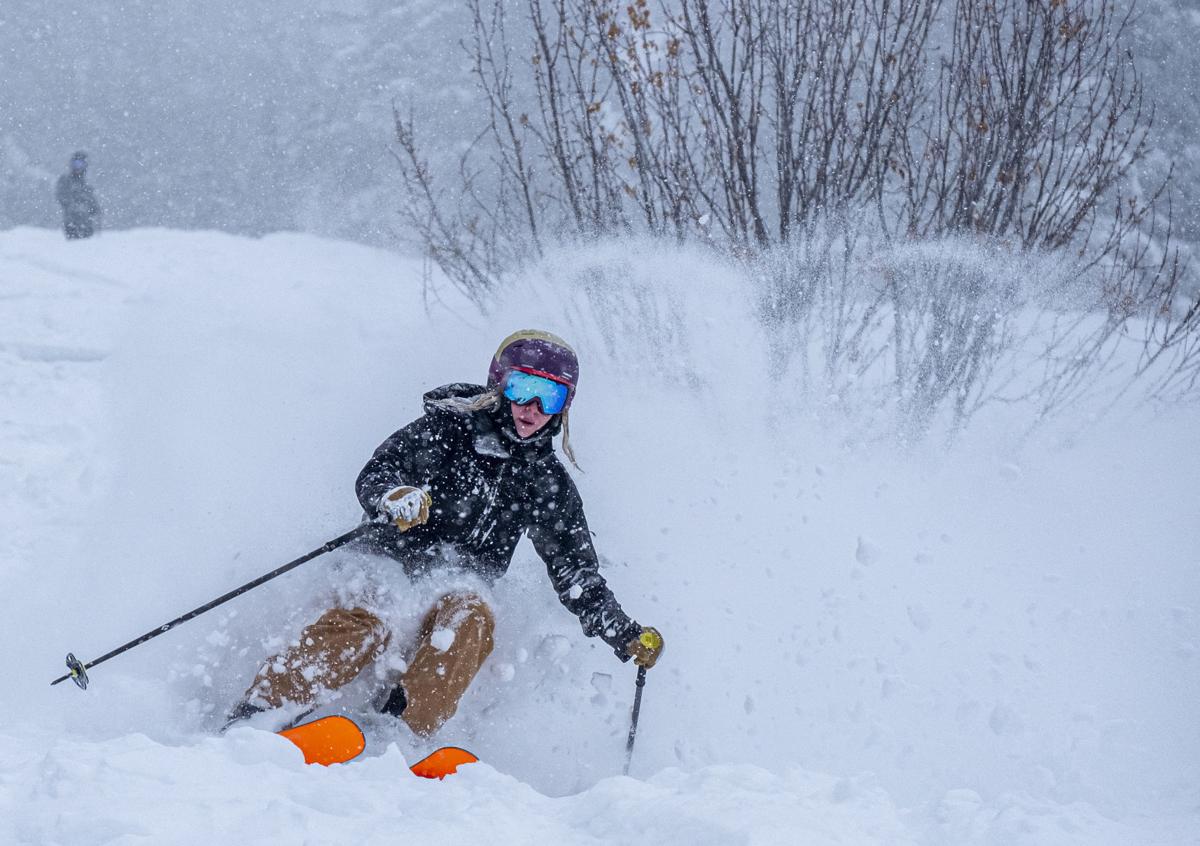
Moments later Tanaya Greaves was smiling ear to ear as she stopped after finding some powder during a two-day storm piling over 57 inches of snow on the slopes of Sun Valley Resort Friday, Jan. 29 in Sun Valley.
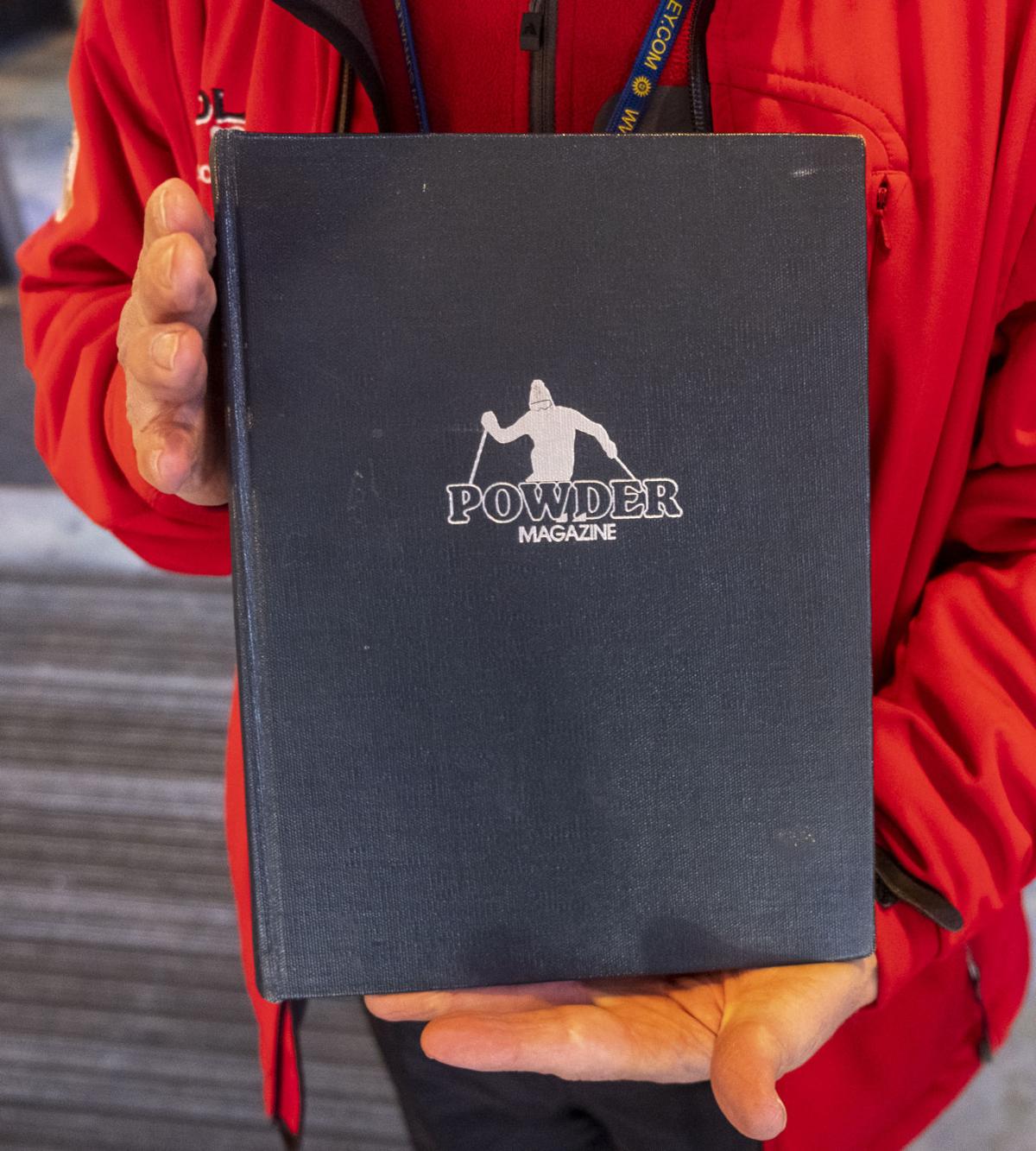
Jake Moe, co-founder of Powder magazine, holds a book containing first editions of Powder Magazine on Dec. 10 in Ketchum.
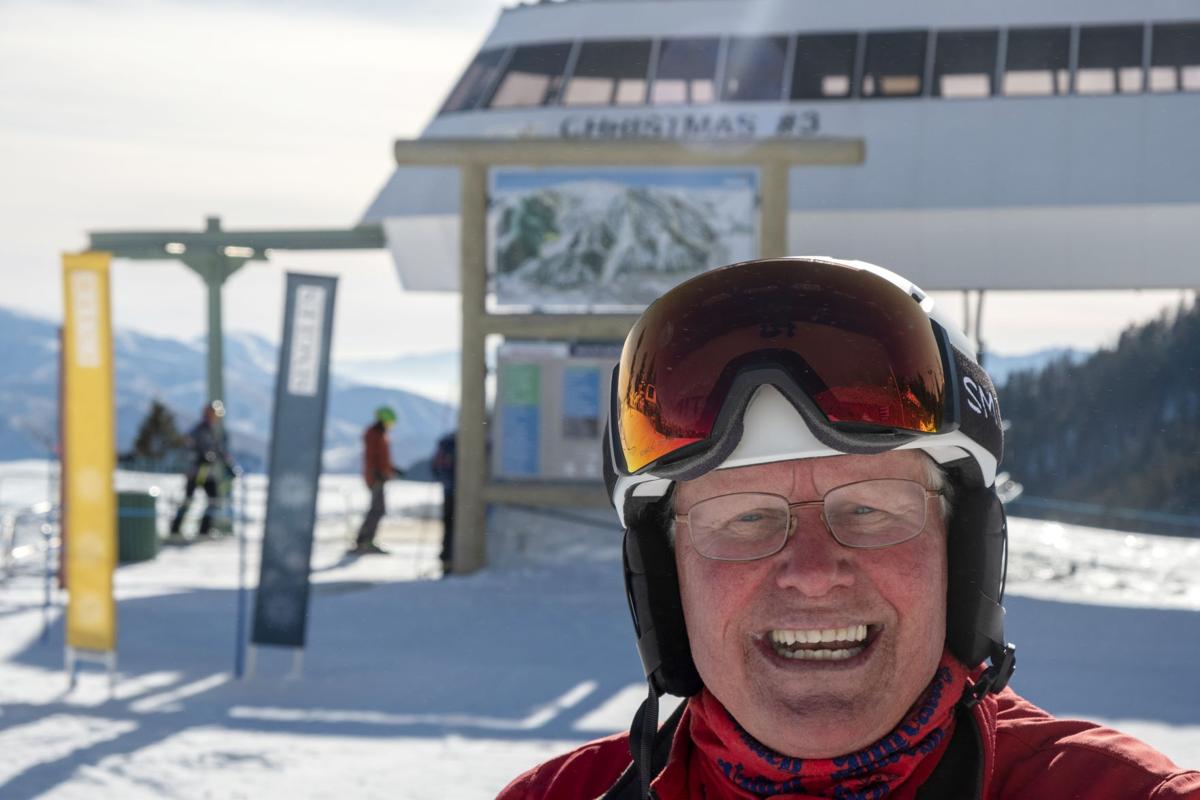
Jake Moe, co-founder of Powder magazine, talks about his days on ski patrol at the base of the Christmas chairlift Dec. 10 at Sun Valley Mountain Resort. The idea for Powder Magazine came to him on an older version of this lift three towers from the top of the mountain.
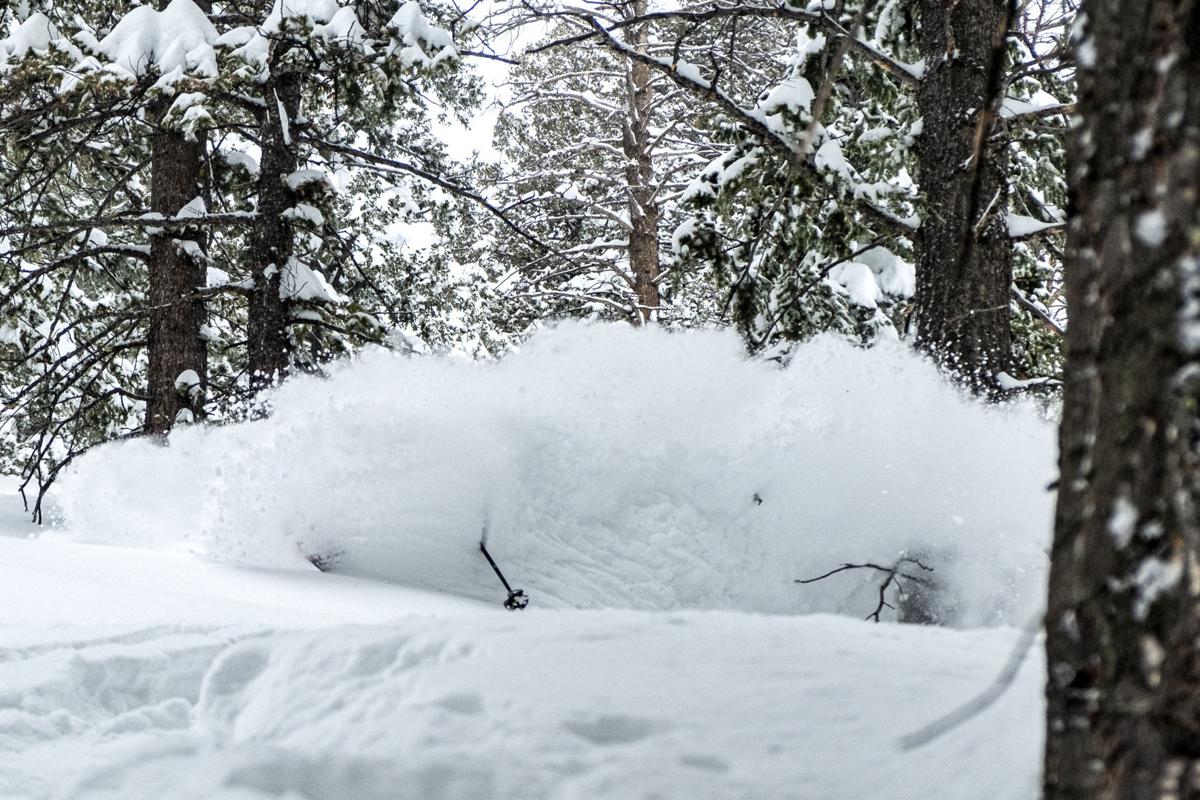
Tristan Greaves’ samples the powder one pole plant at a time on Jan. 29 after two days of snow piled more than 57 inches of snow on the slopes of Sun Valley Resort in Sun Valley.
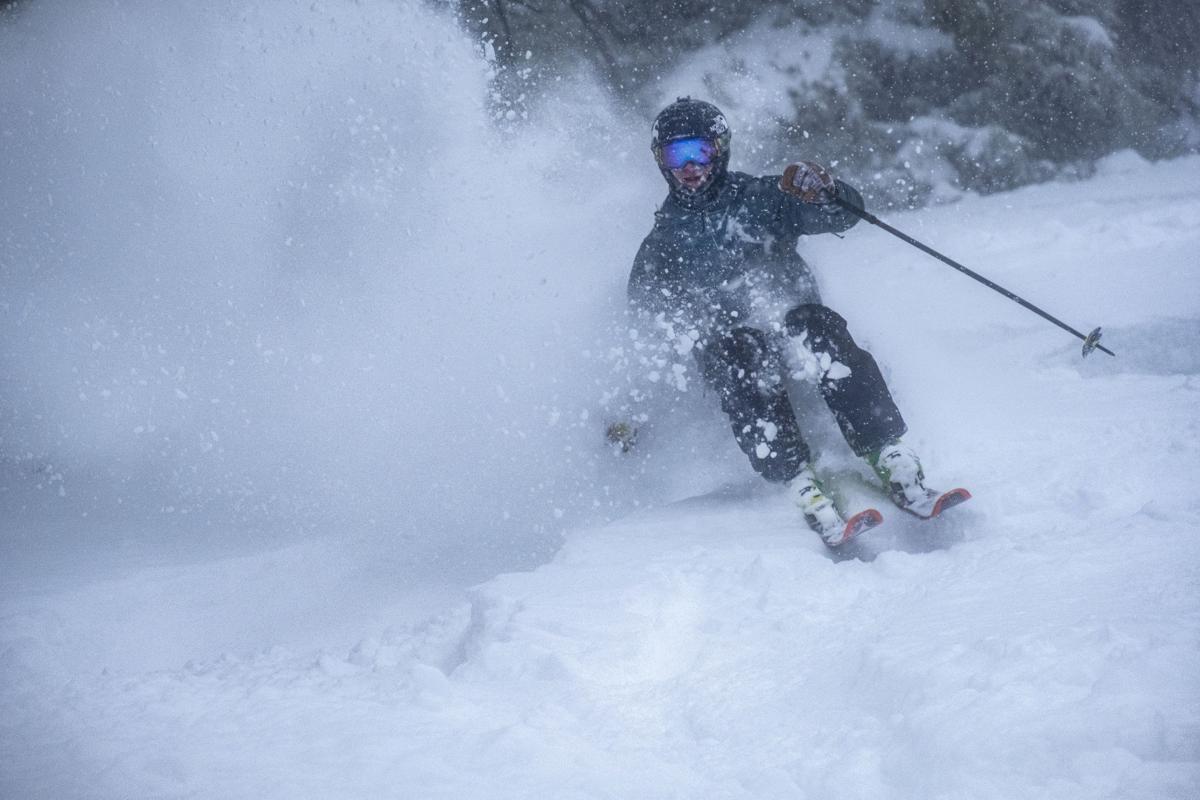
Tristan Greaves makes some turns in the powder on Jan. 29 after 57 inches of snow fell on the slopes of Sun Valley Resort.
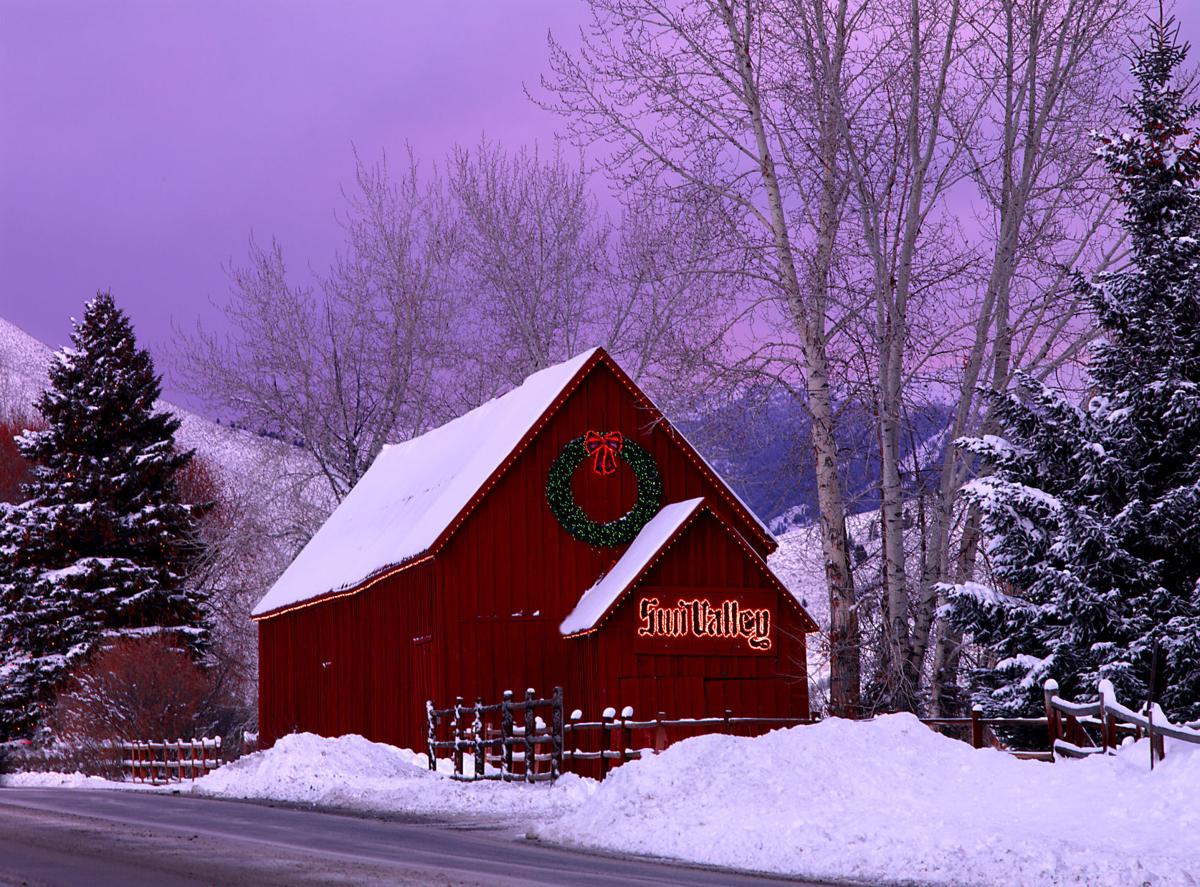
The Sun Valley iconic red barn in Ketchum.
Fifty years have passed since Jake Moe had his idea to create Powder Magazine.
“The history of Powder — the original germination of the idea — came three towers from the top on this Christmas lift,” Moe, co-founder of Powder, said on a mid-December day as he rode to the top of the hill at Sun Valley.
The euphoria he felt all those years ago bubbled up as he neared Christmas Ridge and the Lookout Restaurant.
“I was riding up this chair and it was almost like a premonition, an incredible idea, and I said almost out loud, ‘Hey, I’m going to start a magazine,’” Moe said.
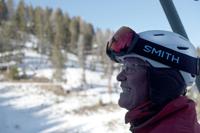
Jake Moe, co-founder of Powder magazine, tells a story Dec. 10 about skiing Sun Valley in the 1970s while riding the Lookout Express chairlift at Sun Valley Mountain Resort.
In October, the lifestyle magazine that inspired skiers to chase their dreams announced it would print its last edition.
Many are shocked to hear of the demise of the magazine.
“There’s going to be a huge void for many of the contributors, readers and subscribers for the well-crafted stories and iconic photos that have made Powder one of the greatest ski publications of its time,” said Greg Von Doersten, a senior photographer with Powder Magazine for the past 30 years.
The thrill of powder
Floating effortlessly down a deep bowl or glade while frosty snowflakes wisp up and over your shoulders and goggles is like no other feeling.
Skiers want to ski powder; they enjoy looking at and reading about it too. It was true for Moe in his youth and it is true for skiers today.
Images and tales in decades-old Powder magazines are just as powerful as they are today.
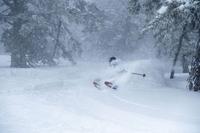
They don’t call powder the ‘white room’ for nothing. Tristan Greaves finds some powder Jan. 29 after 57 inches of snow fell on the slopes of Sun Valley Resort.
Meanwhile, technological advances in equipment have increased the popularity of skiing powder, which, in the late 1960s, required raw power and form. Getting down the mountain was a slow process as the deep snow kept ski tips buried while the skiers contorted their bodies oddly and wiped out after reaching the bottom.
Today’s skiers, however, easily maneuver the deepest fields of snow — known as being in the “white room.”
The passion for skiing powder remains with skiers for life, and gives rise to the magazine’s motto, “Powder to the people.”
“To us powder means freedom, with an emphasis, not on how you do it, just doing it more,” wrote Powder’s founders in the magazine’s first edition. “It is beyond equipment, form, all means getting away from the crowd to a place where there are no lines, no lift towers, no snow fences, no bodies in the way. Just snow. It’s another world.”
Arriving at the destination
Skiing was a family affair beginning at an early age for Moe and his older brother, Dave. Each started skiing before they entered their Seattle grade school.
Their dad visited Sun Valley for a ski vacation in 1956 and sent home postcards of the resort.
Sun Valley “looked just amazing” from the photos, Jake Moe said. A dozen years later, a friend at the University of Washington told him he occasionally worked in Idaho.
“Every year I go be a waiter in Sun Valley,” his friend told him. “I ski during the day, wait tables at night.”
Jake Moe soon found himself driving east through a blizzard in a rickety 1955 Volkswagen Bug with $95 in his pocket.
With no job and no place to stay, Moe found himself at a hotel party the same night he arrived. Exhausted from travel, he fell asleep while he leaned against a wall, then slid and rolled under a bed.
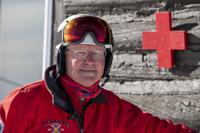
Jake Moe, co-founder of Powder magazine, poses Dec. 10 for a photo in front of the ski patrol shack at the top of the Lookout Express chairlift at Sun Valley Mountain Resort.
“I got up the next morning and everybody was real hungover and I said, ‘I don’t have money to buy a lift ticket,’ and they said, ‘you can go “pack the hill” and get a lift ticket,’” Moe recounted. Packing the hill — meaning using ski boots to compact the snow on the slopes — helps stabilize the snow, keeping skiers safe from avalanches.
Moe ventured up the mountain later that morning for a two-hour shift. Compelled to help after lunch because it was snowing hard, Moe went back out in the afternoon and was offered a floor to crash on that night after a ski patroller noticed his extra efforts. Two and a half days of boot-packing later, Moe was offered a patroller job making $13 a day.
After three seasons and hundreds of days patrolling the mountain, Moe’s days of packing the slopes were done.
In the beginning
Jake Moe picked up an early edition of Surfer Magazine, published by his soon-to-be-friend John Severson, around the same time he had his revelation. Severson’s passion for the surf stoked Moe’s passion for the slopes. Moe decided snow skiing needed the same authentic stories with great photography in a publication similar to what Severson published at Surfer.
“You have to understand, I had no idea what it took to produce a magazine,” Moe said. “I had never written an article, I had never taken a photo for a magazine, I never had sold an ad, and never printed anything.”
Moe called his brother from a phone booth in downtown Ketchum. Dave Moe just so happened to be the yearbook coordinator at the school where he taught.
“When I called my brother and said I was going to start a magazine, I asked him all these (publishing) questions — ‘how’s this work?’ — and at the end of the conversation he was so excited about the idea that the next day he put in his resignation as a school teacher,” Jake Moe said.
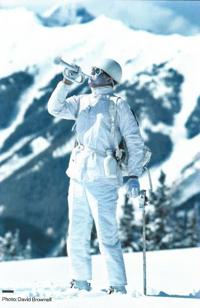
Dave Moe is seen as ‘Captain Powder’ in this old image reprinted in the final issue of Powder magazine. Moe and his brother, Jake, created Powder Magazine in 1972 and Moe created the ‘Captain Powder’ character as a tongue-in-cheek mascot for the magazine.
Dave Moe’s role at the magazine was on the news side. In the early days, he was the quintessential ski bum — spending numerous nights on couches of writers, photographers, and skiers in search of content for the magazine.
According to Jake Moe, his brother’s way of couch surfing from resort town to resort town helped early contributors drive the magazine’s success.
“I’m not going to sleep on a couch for 90 days straight — there’s just no way,” Jake Moe explained. “But that is kind of what (Dave) did and because of that unusual approach the photographers and writers wanted to write for us.”
Sun Valley from 1965 to 1975 was the hot ski scene.
With the likes of filmmakers Warren Miller and Dick Barrymore living in Sun Valley and regularly filming skiers, and top pros such as Jean-Claude Killy and Mike Hattrup ripping powder, Jake Moe decided he needed “to put these people on a magazine,” he said.
Fittingly, the brothers shaped the magazine around the creative juices of photographers and writers. Articles titled, “To Hell You Ride” and “Shop Sweat: He Can Tune Your Skis But He Can’t Tune You” embodied the tongue-in-cheek mantra of the magazine.
The magazine sold copies in 2,800 ski shops in the early days, Jake Moe said.
“I had an old 1962 Porsche that I sold for $1,700, that went into the company, my roommate gave me $1,000, so that was $2,700, (and) my doctor gave me $1,000, that’s $3,700,” Moe told the Times-News. “So I essentially started Powder with $3,700.”
Moe sold Powder Magazine in 1981 to start another media company. The publication was passed around to various media groups — including Surfer’s publishers — for nearly 40 years, until its most recent parent company, A360 Media, took the reins in February 2019.
Printing no more
Powder is followed by more than 300,000 people on Facebook, 417,000 on Instagram and 67,000 on Twitter — similar numbers to rival publication SKI Magazine. But why did a once-profitable, iconic and prolific publication go the way of the Dodo bird?
The short answer is money.
American Media Inc. combined with Accelerate360 and renamed A360 Media in August. The decision to suspend print operations for some of the Adventure Sports Network brands, such as Powder, was made in October.
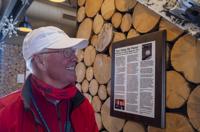
Jake Moe, co-founder of Powder magazine, looks at a plaque commemorating Powder Magazine.
A360 Media spokesman Jon Hammond passed along a statement from the company in an email.
“The decision to suspend print operations was a direct result of the extraordinary economic impact that the pandemic has had on our industry as well as the industries that make up a large part of our advertising partners,” the company’s statement said. “We continue to actively publish across all of the websites and social media channels while we closely monitor the continued economic impact of the pandemic.”
A360 Media says the response from readers and partners has been overwhelmingly supportive, but some, including former Powder Editor-in-Chief Sierra Shafer, criticize the overall move to shut down Powder’s print product.
“A few of the titles have retained a single employee each to field any website content that may come through, but they’re being asked to do this with no staff support and no budget. Zero dollars,” Shafer told the Times-News in an email. “I can’t begin to understand, let alone explain why they’ve chosen to do this.”
In December, Shafer left Powder for SKI Magazine in Boulder, Colorado, to become that magazine’s editor in chief.
Some companies had diversified into less-reputable, money-making publications to stay afloat in today’s financially unstable news environment, she said. Now those markets are faltering.
“The COVID-19 pandemic reduced newsstand sales of the gossip and tabloid magazines our parent company depends on for cash flow so severely they could no longer afford to operate,” she said.
Shafer also claimed the company was not up to the task of printing such a quality magazine “in times of feast or famine,” she said. “It’s awful that Powder had to suffer at their hands.”
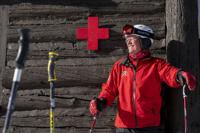
Jake Moe, co-founder of Powder magazine, poses for a photo Dec. 10 in front of the ski patrol shack at the top of the Lookout Express chairlift at Sun Valley Mountain Resort.
Challenges faced by the print industry, digital content competition and the lack of advertising dollars dealt the final blow, photographer Von Doersten said.
“Most supporters didn’t realize one of the most iconic ski trade magazines and their sister publications, Bike, Surfer and Snowboarder was having trouble before it was too late,” he said.
Von Doersten, however, says he thinks there is still work to be done.
“I think there will be another chapter of Powder Magazine.”
Things are evolving
All is neither dark nor silent at the office. Several of the Adventure Sports Network brands, including Powder, retained an employee or two to keep the websites going. Powder’s rich history is not dead; its old work is being repurposed.
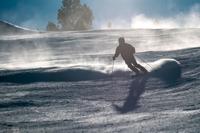
Jake Moe, co-founder of Powder magazine, skis down Flying Squirrel run Dec. 10 at Sun Valley Mountain Resort.
The photography showcased in Powder was a defining attribute to the publication from the onset. Currently, a new online series highlights the magazine’s love affair with photography. “Depth of Field,” a photo gallery of photographers’ top 5 images, visually shows life in the mountains with deep snow underfoot.
“The thing we concentrated on probably more than anything about in the entire magazine were the photo captions because we basically thought that if you had this great photo and then you had this really clever, well-thought-out photo caption, people would go through the magazine and they’ll get hooked reading these captions of all these great photos,” Jake Moe said of the photography.
In addition, “Deep Tracks” is a digital tour through the archives of the magazine. Old images and stories from the magazine’s vault are online for viewing and show ski culture from the first years.
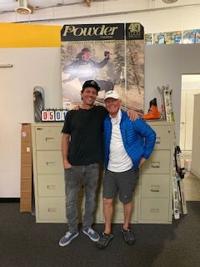
Powder Magazine photographer Dave Reddick, left, and Powder co-founder Jake Moe pose for a photo at the Powder offices in Carlsbad, California, in January 2020. Reddick is the longest serving Powder employee.
The magazine’s online presence, along with other titles in the controlling media group’s quiver, is evolving daily. Though the future is unclear, skiers are still thinking ahead for what Powder looks like and reminiscing about what it meant to them.
“Without Powder, there is one less platform we can offer to the talented writers, photographers, illustrators, and editors who have contributed to the magazine since 1973,” Shafer said. “These voices are what made Powder so successful and so important to the ski community. They are now without an outlet for their art and frankly, it takes food off their table.”
“But like all of us who have ever had the opportunity to work for Powder, to create something for the magazine, or even just read it like so many skiers have, as soon as you cross that line, you’re in. You’re part of the family forever…”


:strip_icc()/BHG_PTSN19720-33d9cd22f6ab49e6a21982e451321898.jpg)

More Stories
Mapping Eastern Europe Website Launched
Kengo Kuma Designs a Dramatically Vaulted Cafe to Evoke Japan’s Sloping Tottori Sand Dunes — Colossal
Keeping The Artist Alive | Chris Locke | Episode 888